Steroid Dose Conversion Calculator
Steroid Conversion Tool
This tool helps you calculate equivalent doses between Medrol and other common corticosteroids. Always consult your healthcare provider before changing your medication regimen.
If you’ve ever been handed a blister pack of Medrol and wondered whether there’s a cheaper or safer option, you’re not alone. Steroids are powerful, but the market is crowded with names that sound similar yet behave differently. This guide breaks down Medrol, lines up its closest cousins, and gives you the facts you need to choose the right anti‑inflammatory for your condition.
What Is Medrol?
Medrol is a brand name of the synthetic glucocorticoid methylprednisolone, first approved by the FDA in 1959. It works by binding to the glucocorticoid receptor in cells, shutting down the inflammatory cascade that fuels asthma attacks, arthritis flare‑ups, severe allergies, and certain skin conditions.
In the UK, Medrol is available as 4mg and 8mg tablets, as well as a short‑acting oral suspension. Its usual adult dose for acute inflammation is 4-8mg once or twice daily, tapered down over a week or two to avoid adrenal suppression.
Common Alternatives to Medrol
When doctors prescribe “a steroid,” they often have a few generic options in mind. The most frequently used alternatives to methylprednisolone include:
- Prednisone - a pro‑drug that the liver converts to prednisolone; widely used for chronic conditions.
- Dexamethasone - a high‑potency, long‑acting steroid often chosen for severe allergic reactions or brain edema.
- Hydrocortisone - the closest analogue to natural cortisol; low potency, ideal for topical use or adrenal insufficiency.
- Betamethasone - similar to dexamethasone but slightly more potent; common in dermatology.
- Triamcinolone - a medium‑potency steroid used in injections for joint pain.
All of these agents belong to the corticosteroid family, sharing the ability to suppress the immune system but differing in potency, half‑life, and side‑effect profile.
How They Compare: Efficacy and Potency
Potency is usually expressed relative to cortisol (hydrocortisone = 1). Here’s a quick look at where each drug sits:
| Drug | Generic name | Potency (vs. cortisol) | Typical adult dose for acute inflammation | Half‑life (hrs) | Common side‑effects |
|---|---|---|---|---|---|
| Medrol | Methylprednisolone | 5-6 | 4-8mg once/twice daily | 18-36 | Weight gain, insomnia, hyperglycaemia |
| Prednisone | Prednisone | 4 | 5-60mg daily (tapered) | 12-36 | Fluid retention, mood swings |
| Dexamethasone | Dexamethasone | 25-30 | 0.5-6mg daily | 36-72 | Severe adrenal suppression, insomnia |
| Hydrocortisone | Hydrocortisone | 1 (baseline) | 20-30mg daily | 8-12 | Less pronounced, but requires higher doses |
| Betamethasone | Betamethasone | 30-40 | 0.5-3mg daily | 36-72 | Skin thinning, acne |
In practice, the choice often comes down to how quickly you need the drug to act and how long you’ll be on it. For a short burst of inflammation, Medrol’s intermediate half‑life offers a balance: it’s stronger than prednisone but won’t linger as long as dexamethasone, reducing the risk of prolonged adrenal suppression.
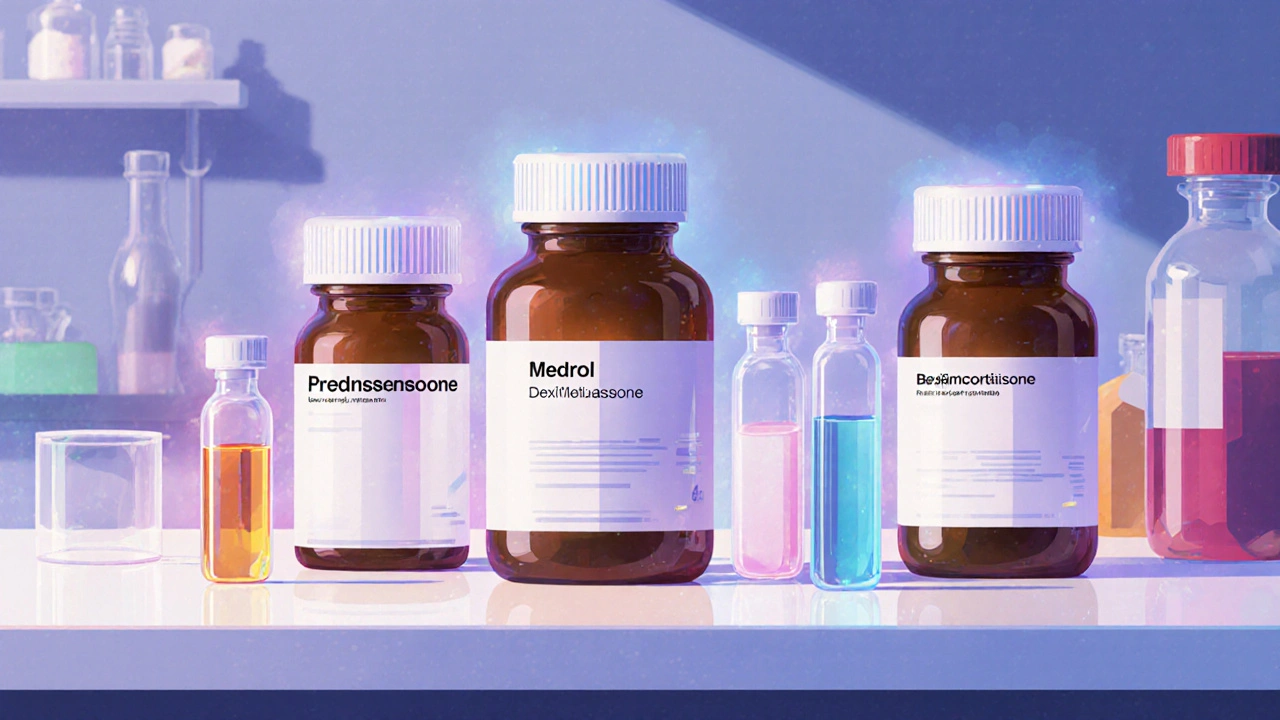
Side‑Effect Profiles
All systemic steroids share a core set of side effects - elevated blood sugar, increased infection risk, bone loss, mood changes - but the frequency and severity differ with dose and duration.
- Medrol: Notable for causing insomnia and a modest weight increase after a 2‑week course. Because its potency is moderate, the endocrine impact is usually manageable with a proper taper.
- Prednisone: Tends to cause fluid retention and ‘moon face’ when used beyond three weeks. It’s the go‑to for many rheumatology patients because it’s inexpensive.
- Dexamethasone: The most notorious for suppressing the hypothalamic‑pituitary‑adrenal (HPA) axis - you’ll often need a longer taper.
- Hydrocortisone: Least likely to cause severe side effects, but you need high milligram doses, which can be inconvenient.
- Betamethasone: Strong skin‑related side effects, making it popular for eczema but less so for systemic use.
One specific concern for adrenal suppression is that abrupt cessation after a high‑dose course can trigger adrenal crisis - a medical emergency. That’s why a taper schedule, even after a short 5‑day Medrol pack, is advisable for doses above 16mg per day.
Cost and Accessibility in the UK
Price matters for most patients, and the NHS pricing tables give a clear picture:
- Medrol 4mg tablets - £0.85 per 20‑tablet pack.
- Prednisone 5mg tablets - £0.30 per 28‑tablet pack (generic).
- Dexamethasone 0.5mg tablets - £0.45 per 30‑tablet pack.
- Hydrocortisone 10mg tablets - £0.60 per 30‑tablet pack.
- Betamethasone 0.5mg tablets - £0.70 per 30‑tablet pack.
Even though Medrol is slightly pricier, its dosing convenience (twice‑daily vs. multiple daily doses for hydrocortisone) can offset the cost for patients who need rapid symptom control.
Choosing the Right Corticosteroid for Your Condition
Below is a quick guide that matches common conditions with the steroid that typically offers the best risk‑benefit balance.
- Asthma exacerbations: Medrol or prednisone - both work well, but Medrol’s faster onset makes it a favorite for rescue courses.
- Rheumatoid arthritis flare: Prednisone for long‑term management; Medrol for short bursts.
- Severe allergic reaction: Dexamethasone - high potency needed fast.
- Skin disorders (eczema, psoriasis): Betamethasone topical; systemic betamethasone rarely needed.
- Adrenal insufficiency: Hydrocortisone - mimics natural cortisol.
Always discuss with your GP or specialist, because individual factors-age, liver function, concurrent medications (especially CYP3A4 inhibitors like itraconazole)-can shift the balance.
Switching Safely Between Medrol and Other Steroids
Switching isn’t just a matter of swapping pills; you need an equivalent dose conversion and a taper plan.
- Calculate the glucocorticoid‑equivalent dose. For example, 4mg of Medrol ≈ 5mg of prednisone ≈ 0.6mg of dexamethasone.
- Choose the new drug based on the target condition and desired potency.
- Start the new steroid at the calculated equivalent dose.
- If the new agent is more potent (e.g., switching to dexamethasone), reduce the dose and monitor for signs of adrenal suppression.
- Taper both drugs over 5-10 days, halving the dose every 2‑3 days, while checking blood pressure, glucose, and mood.
Patients on chronic therapy should have baseline morning cortisol checked before any switch. If cortisol is below 5µg/dL, a slow taper (over 4‑6 weeks) is recommended.
Quick Reference Comparison Table
| Drug | Best for | Typical dose (short course) | Onset | Major side‑effects |
|---|---|---|---|---|
| Medrol | Acute asthma, allergic flare, short‑term arthritis | 4‑8mg once/twice daily for 5‑7 days | 4‑6hrs | Insomnia, weight gain, mild hyperglycaemia |
| Prednisone | Chronic inflammatory disorders | 10‑40mg daily, tapered over weeks | 6‑8hrs | Fluid retention, mood swings |
| Dexamethasone | Severe allergy, brain edema, chemotherapy adjunct | 0.5‑6mg daily for 3‑5 days | 2‑4hrs | Strong adrenal suppression, insomnia |
| Hydrocortisone | Adrenal insufficiency, low‑dose replacement | 20‑30mg divided 3×/day | 8‑12hrs | High pill burden |
| Betamethasone | Dermatologic conditions | 0.5‑3mg daily, short course | 2‑4hrs | Skin thinning, acne |
Frequently Asked Questions
Can I take Medrol and prednisone together?
Generally no. Both are glucocorticoids, so stacking them only raises the risk of side effects without extra benefit. If a doctor wants a higher dose, they’ll usually increase one drug rather than add another.
Is Medrol safe for pregnant women?
Short courses (≤ 5days) are classified as Category C in the UK, meaning they may be used when the benefit outweighs the risk. Always discuss with your obstetrician before starting.
How do I know if I need to taper after stopping Medrol?
If you’ve taken more than 16mg per day for over a week, a taper is recommended. A simple schedule is to cut the dose by 25% every 2‑3 days until you reach a 4mg dose, then stop.
What’s the biggest difference between Medrol and dexamethasone?
Potency and duration. Dexamethasone is about five times more potent than Medrol and stays in the body twice as long, making it better for severe, fast‑acting needs but harder to taper.
Can I switch from Medrol to a natural herbal anti‑inflammatory?
Herbal supplements (e.g., turmeric) can complement therapy but cannot replace a prescribed steroid during an acute flare. Talk to your GP before making any changes.

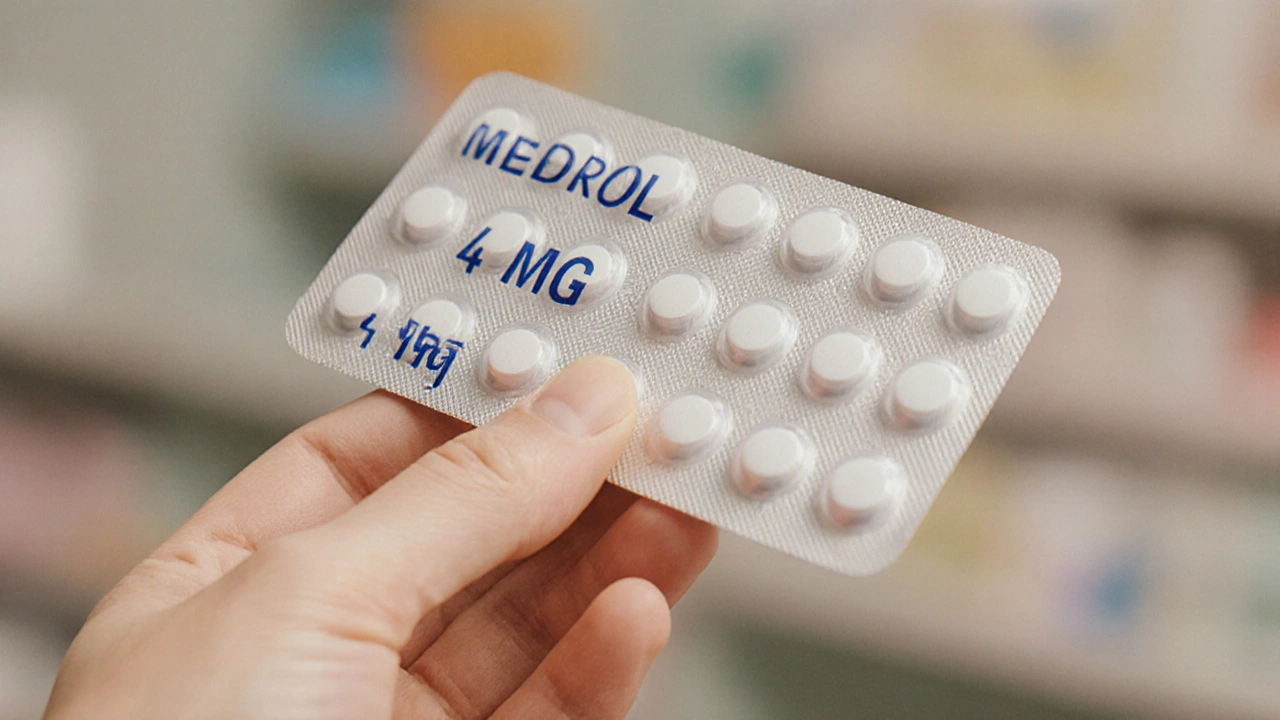
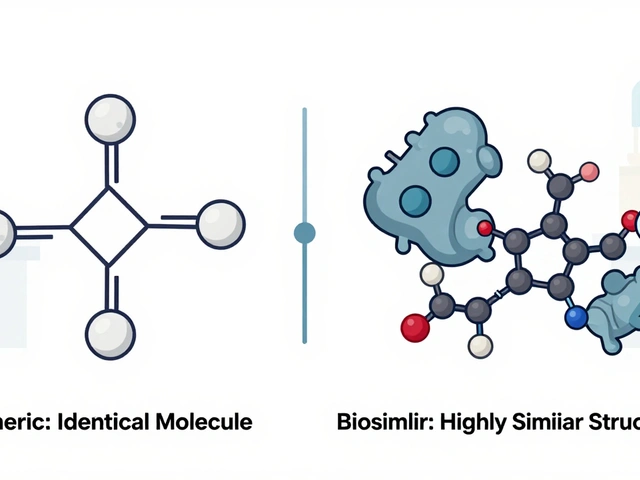
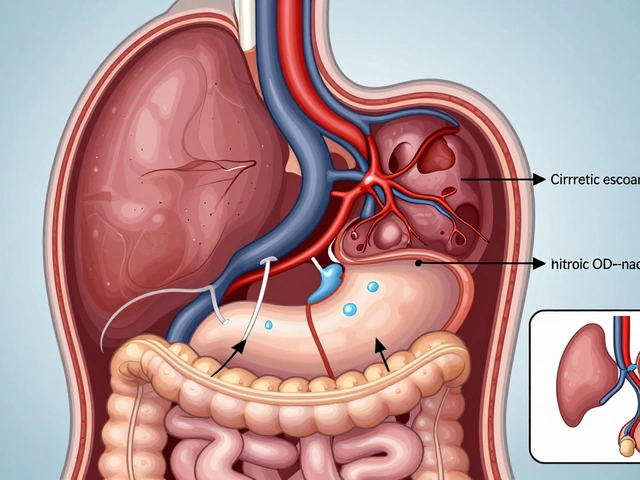

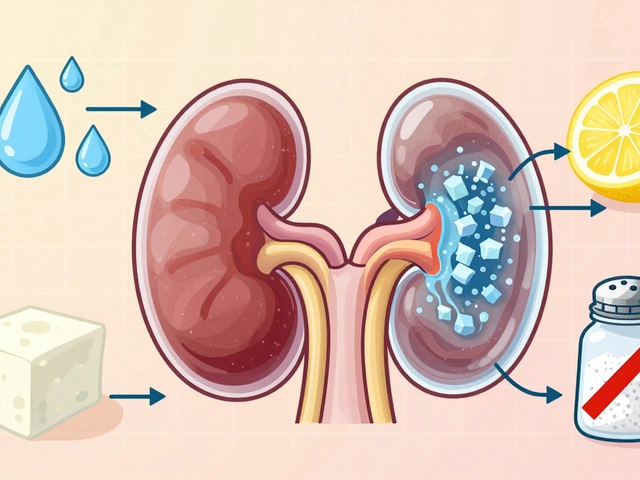
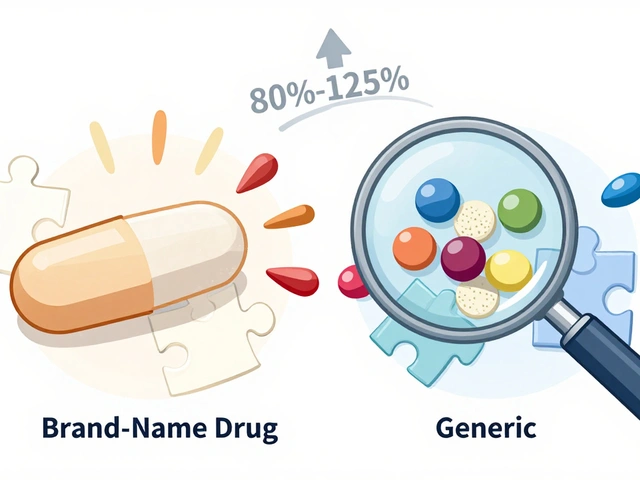
10 Comments
Michelle Wigdorovitz
Whoa, diving into steroid math can feel like cracking a secret code! The Medrol conversion tool is like a cheat sheet for the pharmacy aisle, letting you see how a 16 mg shot of methylprednisolone stacks up against a handful of prednisone tablets. I love that it throws the numbers out in plain English, no cryptic jargon, so you can actually understand what “equivalent dose” means for your body. Just remember, the calculator is a starting point, not a final prescription – your doc still gets the final say.
So, click that button, play with the doses, and get a feel for the potency ladder before your next appointment.
Arianne Gatchalian
Great rundown! It’s so helpful when a post lays out the math without drowning us in medical terminology. I’d add that anyone using the tool should double‑check the result with their pharmacist, just to make sure the conversion fits their specific health context. Also, keep an eye on how your body reacts; even small changes in steroid potency can shift side‑effect profiles. Thanks for making this accessible.
Aly Neumeister
Okay, let’s get straight to the point-this calculator is *awesome*, but don’t think it replaces a doctor’s advice, alright? You input a dose, it spits out numbers, and you’re left wondering if you should trust a computer more than a prescription. Seriously, folks, always verify with a professional-no one wants a surprise cortisol crash.
Also, if you’re tweaking doses, watch for weird symptoms-like sudden weight gain, mood swings, or that weird “moon face” you see in movies. That’s the real world, not just numbers on a screen.
joni darmawan
Indeed, the interplay between glucocorticoid potency and physiological response invites a philosophical reflection on how we quantify health. While the conversion chart offers a pragmatic framework, it abstracts away the individual’s endocrine nuance, reminding us that medicine remains both art and science. One might consider each dosage as a point on a continuum, where the patient’s lived experience provides the ultimate metric.
Richard Gerhart
Alright, let’s break this down piece by piece, because steroid conversion isn’t just a magic trick-it’s science backed by pharmacology. First, methylprednisolone (Medrol) is about 1.25 times as potent as prednisone, so a 20 mg dose of Medrol roughly equals 25 mg of prednisone. Second, dexamethasone sits way up there, about 6‑7 times more potent than hydrocortisone, meaning a 4 mg dose of dexamethasone is comparable to roughly 30 mg of prednisone. Third, remember that hydrocortisone is the baseline (1 mg = 1 mg cortisol), useful for when you need the mildest anti‑inflammatory effect.
Now, why does this matter? Because each steroid has a unique side‑effect profile. Higher potency steroids like dexamethasone can cause more pronounced immunosuppression, hyperglycemia, and mood alterations, while lower potency ones like hydrocortisone tend to have milder systemic effects.
If you’re switching from Medrol to prednisone, watch for a possible increase in appetite and fluid retention-those are common when the total glucocorticoid load climbs. Conversely, moving to a lower‑potency steroid can reduce that risk, but you might need a higher dose to achieve the same anti‑inflammatory benefit.
Another key point: timing matters. Some steroids have longer half‑lives, so dosing frequency changes when you swap drugs. Dexamethasone, for example, often needs just a once‑daily dose, while prednisone might be split into morning and early afternoon doses to mimic natural cortisol rhythms.
Don’t forget bone health. Chronic high‑dose steroids increase osteoporosis risk, so calcium and vitamin D supplements become essential. Also, regular bone density scans are a smart move if you’re on long‑term therapy.
And here’s a practical tip: use the calculator to simulate different scenarios before you talk to your doctor. Bring the printed results to your appointment; it shows you’re proactive and can spark a more informed discussion.
Finally, always taper steroids slowly under medical supervision. Abrupt stops can cause adrenal insufficiency, a dangerous drop in cortisol production that can lead to fatigue, weakness, and even shock.
In short, the conversion tool is a valuable guide, but it’s only as good as the clinical context you apply it to. Keep your healthcare team in the loop, monitor side effects, and adjust doses responsibly.
Kim M
Sure, the “big pharma” doesn’t want you to know these tricks 😏
jana caylor
Hey everyone! Just wanted to chime in and say that the calculator is super user‑friendly-just pick your current steroid, type the dose, and hit calculate. It spits out a clean table with the equivalents, so no need to do mental math. I’ve used it when switching from prednisone to Medrol and it saved me a ton of guesswork. Remember to keep a copy of the results handy for your next doctor visit, and double‑check any dosage changes with your pharmacist. Happy dosing!
Vijendra Malhotra
Exactly! The tool bridges the gap between complex pharmacology and everyday patients. In my experience, when I helped a friend transition from hydrocortisone to a higher‑potency steroid, seeing the numbers laid out at a glance prevented a dangerous overdose. Plus, the visual table respects cultural differences in medication naming, which is crucial for multinational patients. So, use it, share it, and keep the conversation alive across borders.
Nilesh Barandwal
Quick note: always verify the conversion before changing doses! Even a small mis‑calc can swing your cortisol levels dramatically-watch for side effects, and keep your doc in the loop.
Elise Smit
Great reminder! Consistency is key, so track any symptoms you notice after a dose change and report them promptly. Your healthcare team can adjust the regimen to keep you safe and effective.